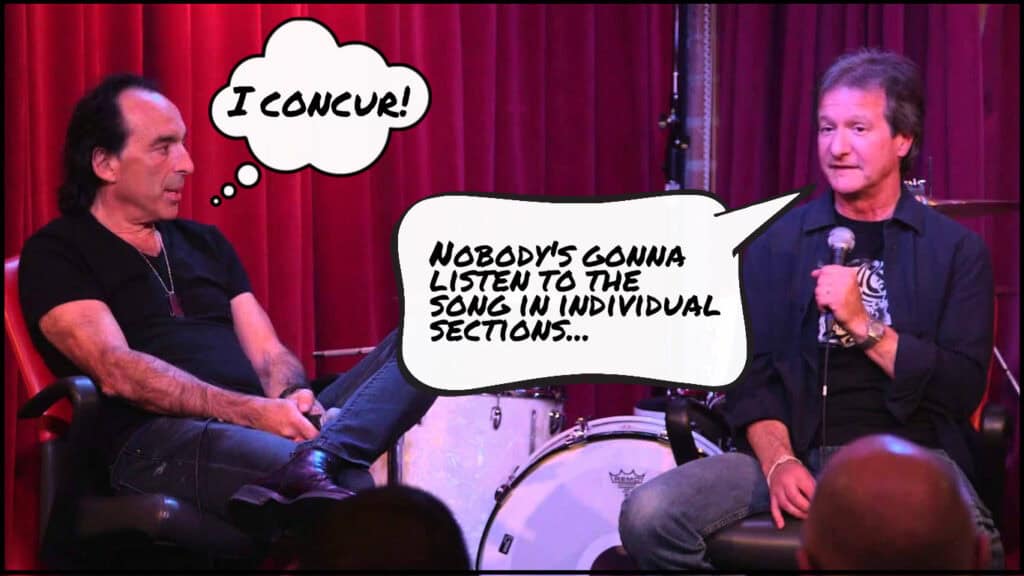New Monday #14
Happy Monday!
This week it seems we are revolving a bit around mixing.
Read This Article
This is a wonderful dual interview featuring legendary mixing god Bob Clearmountain (Bowie, The Rolling Stones, Bruce Springsteen, everybody), and the brilliant Jesse Ray Ernster (Kanye West, Doja Cat, Burna Boy).
It covers careers, fave gear, technology—there’s a huge chunk where these two breakdown mixing in ATMOS—the origin story of the NS-10 as a studio speaker, and more.
It’s also funny and warm: these two guys have total respect for each other and a great friendship. It’s how life should be. Very worth a read.
Cool, not perfect
Mixing can get very clinical, nitpicky, and anal, and far too technical. Often, my favorite mixes have something wrong about them that makes them more memorable.
It’s like a beautiful face: sometimes there’s a flaw on that face that makes it stand out and even more interesting.
Look at models. Some of them are really weird looking, but there’s something gorgeous about that.
This Roberta Flack song is a mixing mess. Have a listen and then read on.
What is up with that kick, right? It’s HUGE. And it’s panned to the right. It sounds like someone beating a suitcase with a soup ladle. There’s a ton of stuff and gook in the low mids.
I met the guy that mixed it, Gene Paul (Les Paul’s son). He was mastering a record I had mixed, and when I commented on how one thing had too much bass on it, Gene said, “I put way too much foot on Killing Me Softly, but it worked.” It sure did.
The song I put too much bass on... not so much. Sigh.
Another mess, courtesy of The Beatles
This is probably less about the choices made and more about the technology limitations of the time, but this is an oddball mix even by Beatles standards.
The drums are totally lost except every now and again there’s this really quiet go ‘round fill in the back corner off to the left. But there is a lead tambourine on it! It’s the loudest thing on the track, other than the vocals.
Big fave moment at 1:51: There’s a great guitar riff that is super loud for like two measures, and then is gone, never to return. What??
It’s worth it to note that The Beatles had so many great riffs that they could basically throw one away for a break. Other bands would have built the entire song around that riff.
Mixing, Ears, Speakers
While we are in the age of digital music, human biology and physics remain strictly analog. A mix lives or dies in that very analog interaction of air and ears.
Here are some useful thoughts and tricks on dealing with speakers and your ears while mixing.
Mix with your ears
Just a quick thought here: there are now so many visual aids to mixing—real time pictures of frequency response and the like—that one can get caught up in how things look rather than how things sound.
In the early 90s, I hooked up a RTA to an SSL and mixed with it for a few weeks. I would try to get my mixes to have a similar “picture” to reference mixes I ran through the RTA. I learned a lot, but mainly I learned that I didn’t get good mixes chasing a picture.
No one has ever said, “I love the way this mix looks.”
Bad mix. Keep at it or restart?
One can start with the best intentions and wind up with an awful mix. Or one can be mixing and just not be hitting it right.
Do you restart the mix from scratch or just keep working through it?
I found whenever I restarted a mix, I would pretty much get something very similar to the mix I thought was awful unless I approached it from a radically different perspective.
The next time you’re caught in a crappy mix, throw it out and start again, but do something very different to start. If you usually begin with drums, start with the vocals. If you like to get an overall balance first thing, start the mix with something really strange, like bring up the backing vocals or the keyboard pads and start there.
The point is to break your pattern. If you don’t break the pattern, you’ll just repeat the pattern.
Mix it up!
Warm regards,
The guys at Korneff


